Call it serendipity.
Call it a prize from the sky.
Frankly, it's not every day that a newly emerged Gulf Fritillary butterfly, Agraulis vanillae, lands at your feet. It crawled from its chrysalis, hinged to a eight-foot high tree limb near our passionflower vines (Passiflora), and fell, quite unceremoniously, on a bed of wood chips.
Right where I was standing.
At first I thought a scrub jay or an European paper wasp (which keep an attentive eye on the Gulf Frit population in our yard) had nailed it.
No. This was newly emerged. It looked like a plop of red, orange and silver paint, its body limp, its antennae crumbled, its wings still damp.
I lifted it gingerly and placed it on a Passiflora to dry off. Did it fly off in five minutes? Ten minutes? Half an hour? No, it stayed for two hours. When scores of male adult butterflies ventured down to check its gender and then left, I figured it to be the same gender.
A boy butterfly.
If it were female, a male would have mated with her in minutes as one did several weeks ago when a female emerged from a chrysalis. (That, however, is not the only way you can tell gender! There are abdominal differences and males are more brightly colored, a deeper reddish-orange, than the females.)
Boy Butterfly leaned his head back, opened and stretched his wings, and finally, he took off, touching me on the shoulder as he floated by.
Butterfly expert Art Shapiro, distinguished professor of evolution and ecology at UC Davis who monitors the butterfly population in the Central Valley, is glad to see the Gulf Frits making a comeback in this area. He writes on his website:
"this dazzling bit of the New World Tropics was introduced into southern California in the 19th Century--we don't know how--and was first recorded in the Bay Area before 1908, though it seems to have become established there only in the 1950s. It can be quite common in the East and South Bay--particularly in Berkeley--and has been found breeding spontaneously as far inland as Fairfield where, however, it is not established. There are scattered records in the Central Valley and even up to Folsom, perhaps resulting from people breeding the species for amusement or to release at social occasions. According to Hal Michael, who grew up in South Sacramento, this species bred there in abundance on garden Passiflora in the early 1960s. It seems to have died out by the early 1970s, however. Intolerant of hard freezes, it still managed to survive the record cold snap of 1990 that largely exterminated the Buckeye regionally!"
As for Boy Butterfly, a loudly buzzing female Valley carpenter bee attempting to forage on a flower near his head, prompted his rather abrupt departure.
Attached Images:
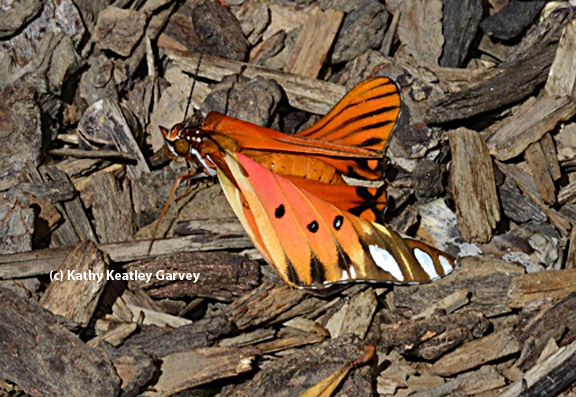
Newly emerged Gulf Fritillary butterfly, fresh from its chrysalis, lands on a bed of wood chips. (Photo by Kathy Keatley Garvey)
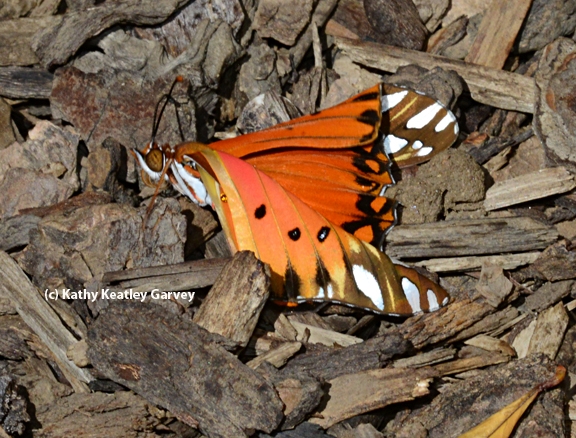
Gulf Fritillary starts to stir. (Photo by Kathy Keatley Garvey)
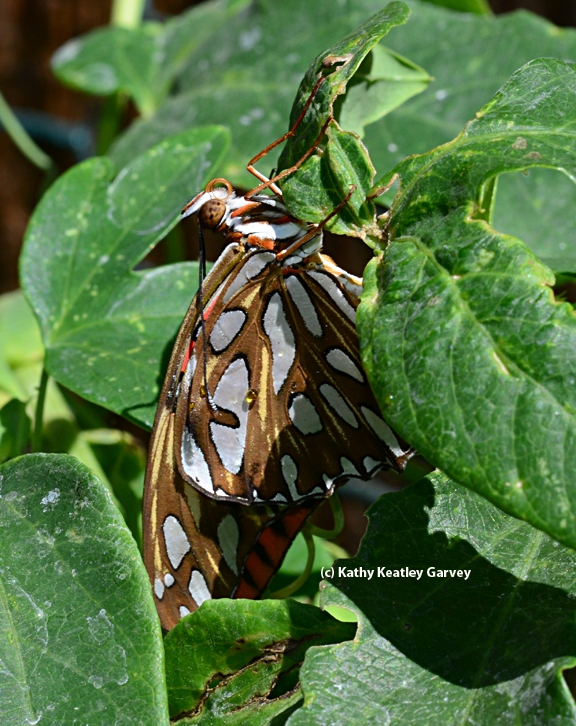
Gulf Fritillary drying off on a passionflower vine. (Photo by Kathy Keatley Garvey)
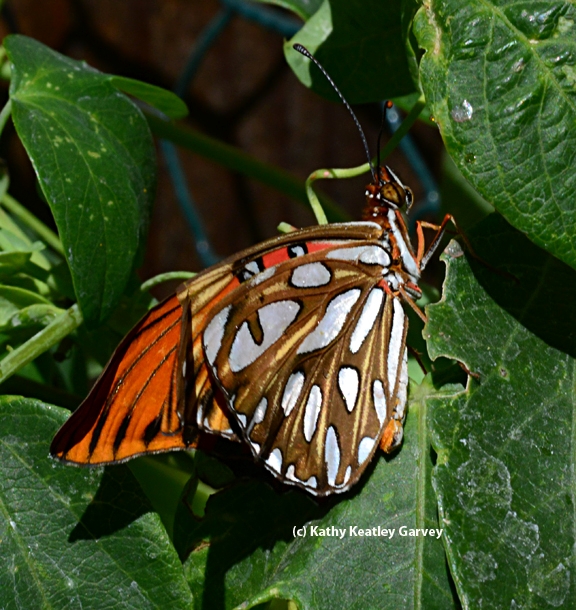
Gulf Fritillary slightly opens its wings. (Photo by Kathy Keatley Garvey)
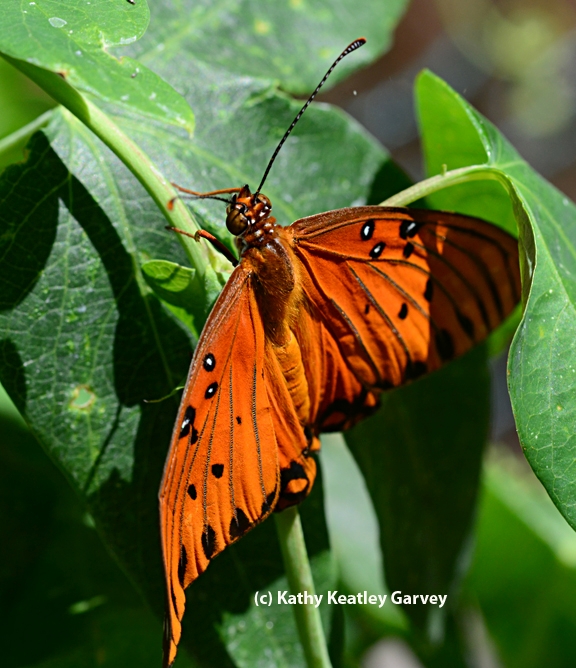
First opening of the wings. (Photo by Kathy Keatley Garvey)
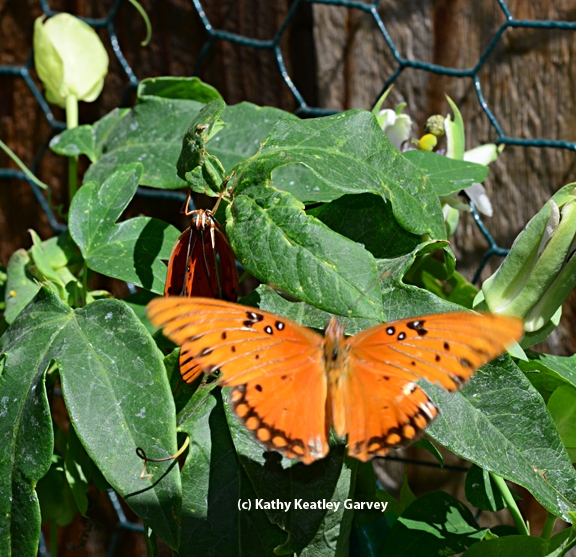
Another butterfly comes down to investigate. (Photo by Kathy Keatley Garvey)
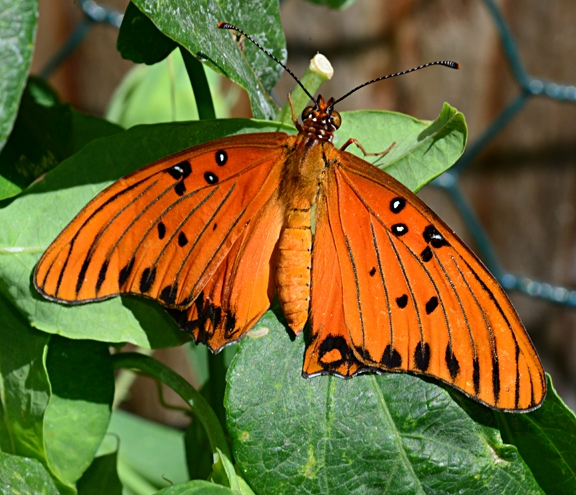
One last spread of the wings, and it's off. It's a male.(Photo by Kathy Keatley Garvey)